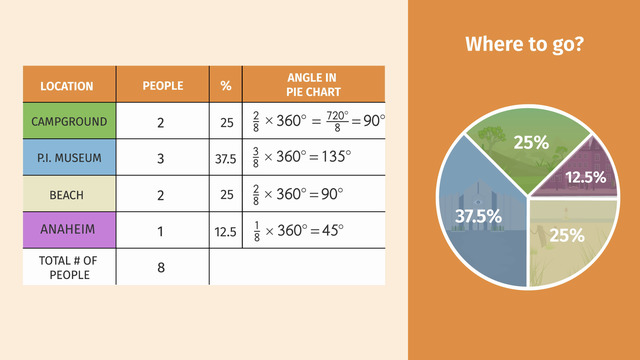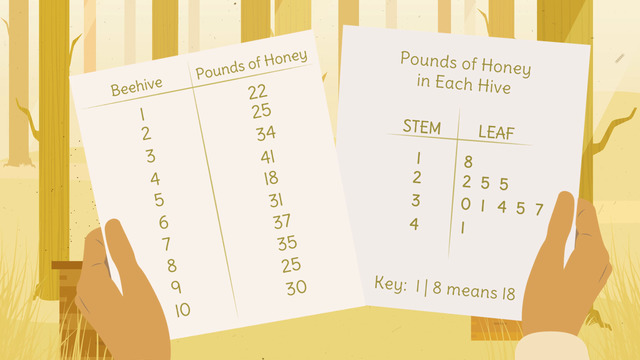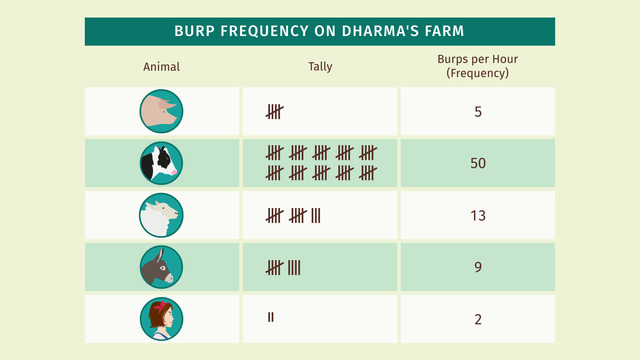Dot Plots


Basics on the topic Dot Plots
There are different ways of representing numerical data in graphical form. One of these ways is a dot plot. A Dot plot, or dot chart, is one of the simplest ways of representing numerical data in graphical form, especially if the data is composed of small quantities. And as the name suggests, the graph is composed of dots or filled circles.
To graph numerical data using a dot plot, you need to first draw a horizontal line and a vertical line to form the first quadrant of the Cartesian plane. Then arrange the labels or categories of the given data on the horizontal line as if they were arranged like a number line. Next, use the vertical line to create a number line and mark the number line with the frequency number of each category. The vertical line is not necessary on the graph but it is advisable to have in order for the graph to be more consistent. Lastly, plot the dots in front of each category vertically until it reaches the highest number of frequency. Dots on each category must be aligned together, however, some only draw the dot on the highest number. Either way, the graph is correct. For a concrete and visual example on how to represent numerical data using dot plot, you can watch this video.
Dot plots were first developed in the field of genetics. Dot plots helped scientists to investigate properties of protein coding sequences in order to predict secondary structures like stem-loop formation or structural RNA domains. Dot plots have also been applied in software development to identify redundant code and to ease maintenance or design patterns among releases.
Summarize and describe distributions.
CCSS.MATH.CONTENT.6.SP.B.4
Transcript Dot Plots
After hearing stories from her grandmother of a magical place, Elz the Elf Girl searched far and wide and finally, she's found the storied wonderland! Legend says that whoever proclaims the 'magic' word while standing in this exact spot will be granted the strength to lift 5,000 times their own weight.
Decipher a dot plot
Since the colums aren't labeled Elz doesn't know where to begin to look for the magic word. Luckily, Elz can use a key given to her by her grandma, as a tool to decipher a dot plot. To find the correct letter in each column of a dot plot, she must first count the number of objects in this list: boulders, torches, statues, skulls, willow trees, and the number of steps.
Drawing a dot plot
Elz counts. She has 8 boulders, 4 torches, 3 statues, 5 skulls, 1 willow tree, and the stairs have just 3 steps. Elz jots down the totals into a frequency table, but she needs to present the data in a dot plot. How to do this? Let’s help her out. To draw the dot plot, first, we draw a horizontal line and label it with the different items you would like to count. You can use words, pictures, or numbers when appropriate. Now, add dots to indicate the frequency of each item. It’s optional to draw a vertical line labeled with numbers to identify the frequency, and it may even make the dot plot easier to interpret. Notice how the data jumps out at you? Okay, Elz is good to go.
Completing a dot plot
You're probably wondering how she can use Grandma’s key to discover the magic word. Well, there's another way to complete a dot plot. If we put a dot only at the point of the greatest absolute value for each column. Take a look what happens when she uses the key. Elz discovers the magic word, ‘B’ ‘E’ ‘M’ ‘I’ ‘N’ ‘I'. Bemini? Hmm, maybe ’be mini’? Something is happening! Will Elz be able to lift 5,000 times her own weight?
Ah, now I get it, ‘be mini!‘ I hope this isn't permanent.
Dot Plots exercise
-
Explain how to draw a dot plot.
HintsHere you can see the first step.
This is how the second steps looks if you want to show the frequencies of the boulders, torches, statues, and so on.
This is a completed dot plot.
SolutionHow can we draw a dot plot?
- First, draw a horizontal line.
- Next, label this line. Which kind of labeling you choose doesn't matter: you can choose words, or numbers, or pictures.
- Add the corresponding dots to show the frequency.
- Draw a vertical line with the labeling of the frequencies for a better understanding.
- You can also remove the dots up to the one showing the total frequency.
-
Draw a dot plot.
HintsFind the right symbol for each of the objects below the horizontal line. There is only one dot per column.
For example, if Elz saw three apples, you would have to look for the column with the symbol of an apple and put a dot at the row with the frequency $3$.
The solution is a composition of two words.
SolutionTo figure out the magic word, first you have to look for the corresponding symbol below the horizontal line.
Let's start with the boulders in the first column. Elz can see eight of them. So in the first column we count from bottom to top and mark the eighth letter, which is "B".
In the next column we see the torches. Elz finds four of them. This gives us "E".
Next, let's have a look at the number of statues, which is three. This leads us to "K".
The number of skulls, five, results in "I".
There are still two letters left:
"N" for the one tree and "D" for the three steps.
The magic word is "BE KIND".
-
Label the dot plot.
HintsIf the number of roses Kyla finds is five, we have to look for the column with exactly five dots and label it with "roses".
SolutionLet's have a look the dot plot from left to right:
- In the first column we find five dots, which corresponds to the number of roses.
- The second column contains six dots, the number of lilies.
- The third column has three dots, which represents the number of daisies.
- The number of dots, four, in the fourth column corresponds to the number of irises.
- The number of dots in the last column, eight, is the same as the number of asters.
-
Determine how many cars of each color are passing by in one hour.
HintsThe total number of cars is $33$.
You can either count the number of dots or just have a look at the vertical line.
SolutionJust count the number of dots in each column:
Yellow cars - there are $7$ dots, so Kyla saw $7$ yellow cars in one hour.
To determine the numbers of the other cars, we use the same strategy of counting dots:
- Green cars - $6$ dots represent $6$ green cars.
- Blue cars - $8$ dots represent $8$ blue cars.
- Red cars - $12$ dots represent $12$ red cars.
-
Find the right dot plot presenting the objects Elz can see.
HintsThe symbols below the horizontal line from left to the right are: boulders, torches, statues, skulls, trees, and steps.
Check the frequency each time.
SolutionHere you see the right dot plot.
To show data in a dot plot, we first draw a horizontal line and label it, for example by using pictures.
Next, we add the number of dots corresponding to the given frequencies from left to right:
- $8$ boulders
- $4$ torches
- $3$ statues
- $5$ skulls
- $1$ tree
- $3$ steps
-
Find the right dot plot for each data set.
HintsYou have to count the number of dots per column.
You can also draw a dot plot yourself:
- Start with the horizontal line and label it from $1$ to $6$.
- Add the number of dots per column corresponding to the data set.
- Compare your dot plot with the given ones.
SolutionHere is how you create a dot plot:
- First, draw a horizontal line.
- Next, label this line from left to right with $1$ to $6$.
- Then add the number of dots which are given in each table.
$\begin{array}{l|c|c|c|c|c|c} \text{number}&1&2&3&4&5&6\\ \hline \text{frequency}&7&7&8&6&5&4 \end{array}$
The first two columns contain $7$ dots each, the next $8$, and then $6$, $5$, and $4$ dots. The corresponding dot plot is the red one.
In a similar way you can assign the other tables to the corresponding dot plots.
$\begin{array}{l|c|c|c|c|c|c} \text{number}&1&2&3&4&5&6\\ \hline \text{frequency}&7&6&5&8&5&6 \end{array}$
corresponds to the green dot plot.
$\begin{array}{l|c|c|c|c|c|c} \text{number}&1&2&3&4&5&6\\ \hline \text{frequency}&5&6&7&8&7&6 \end{array}$
corresponds to the yellow dot plot.
$\begin{array}{l|c|c|c|c|c|c} \text{number}&1&2&3&4&5&6\\ \hline \text{frequency}&7&6&8&8&7&5 \end{array}$
corresponds to the blue dot plot.
















